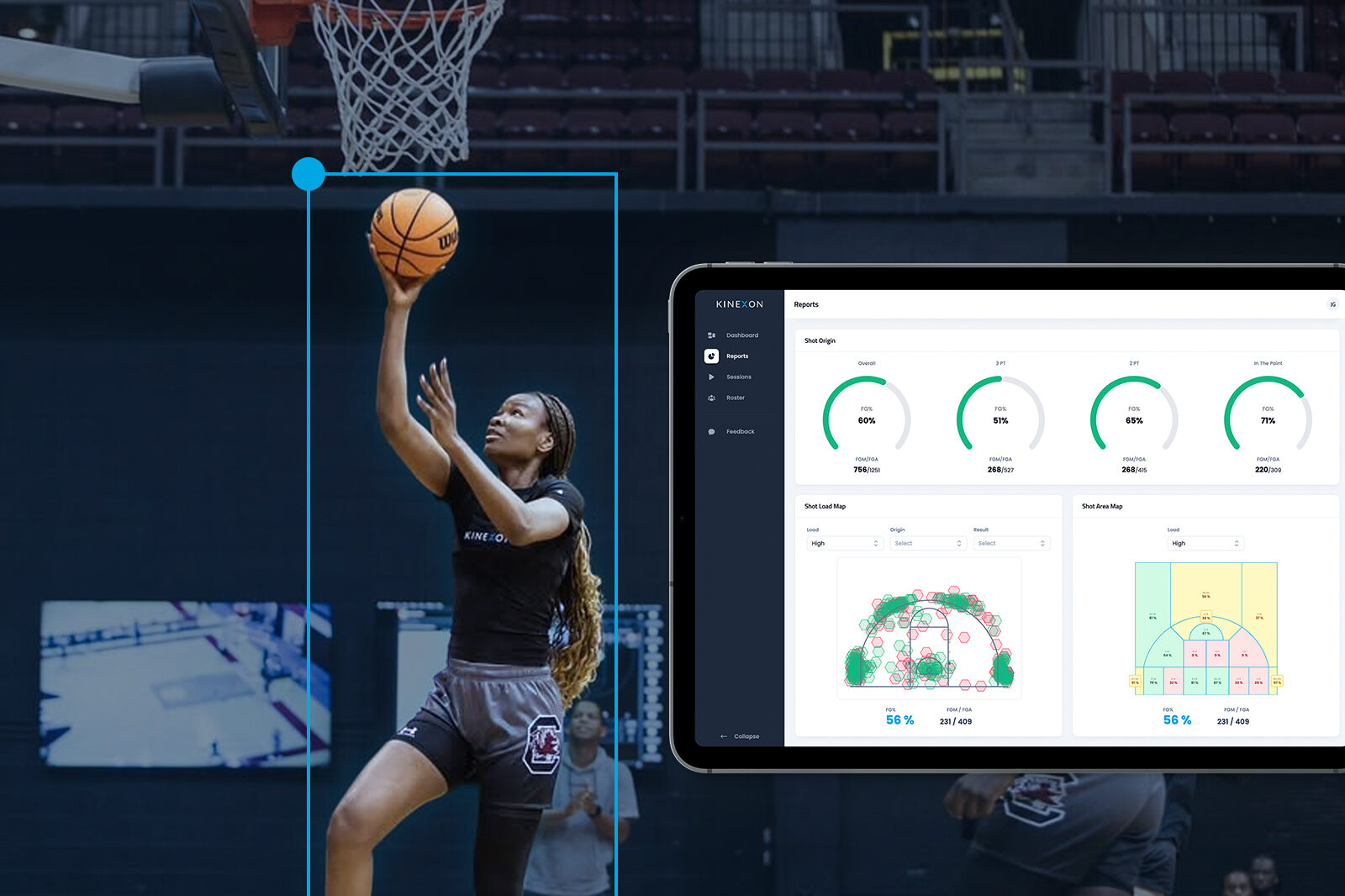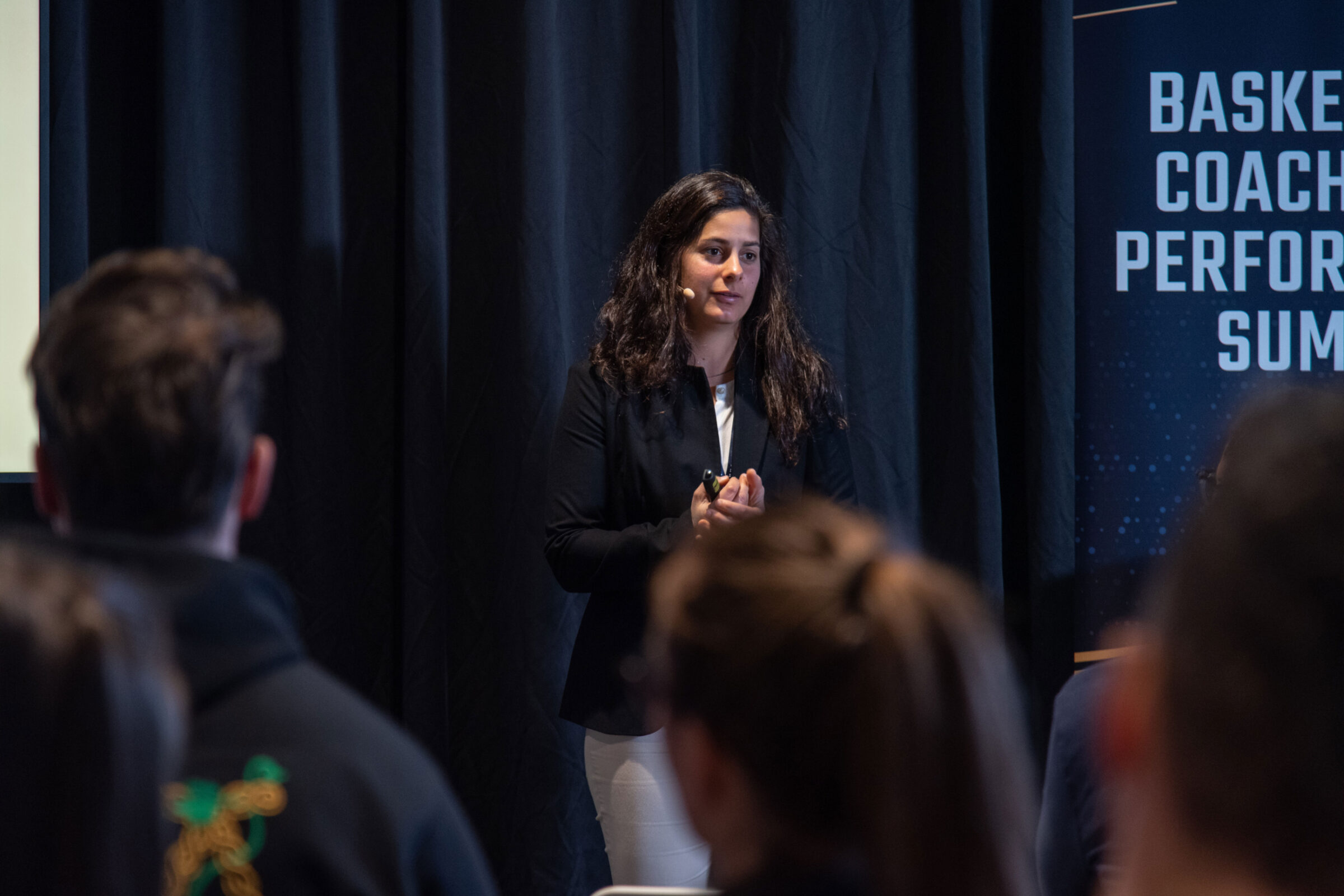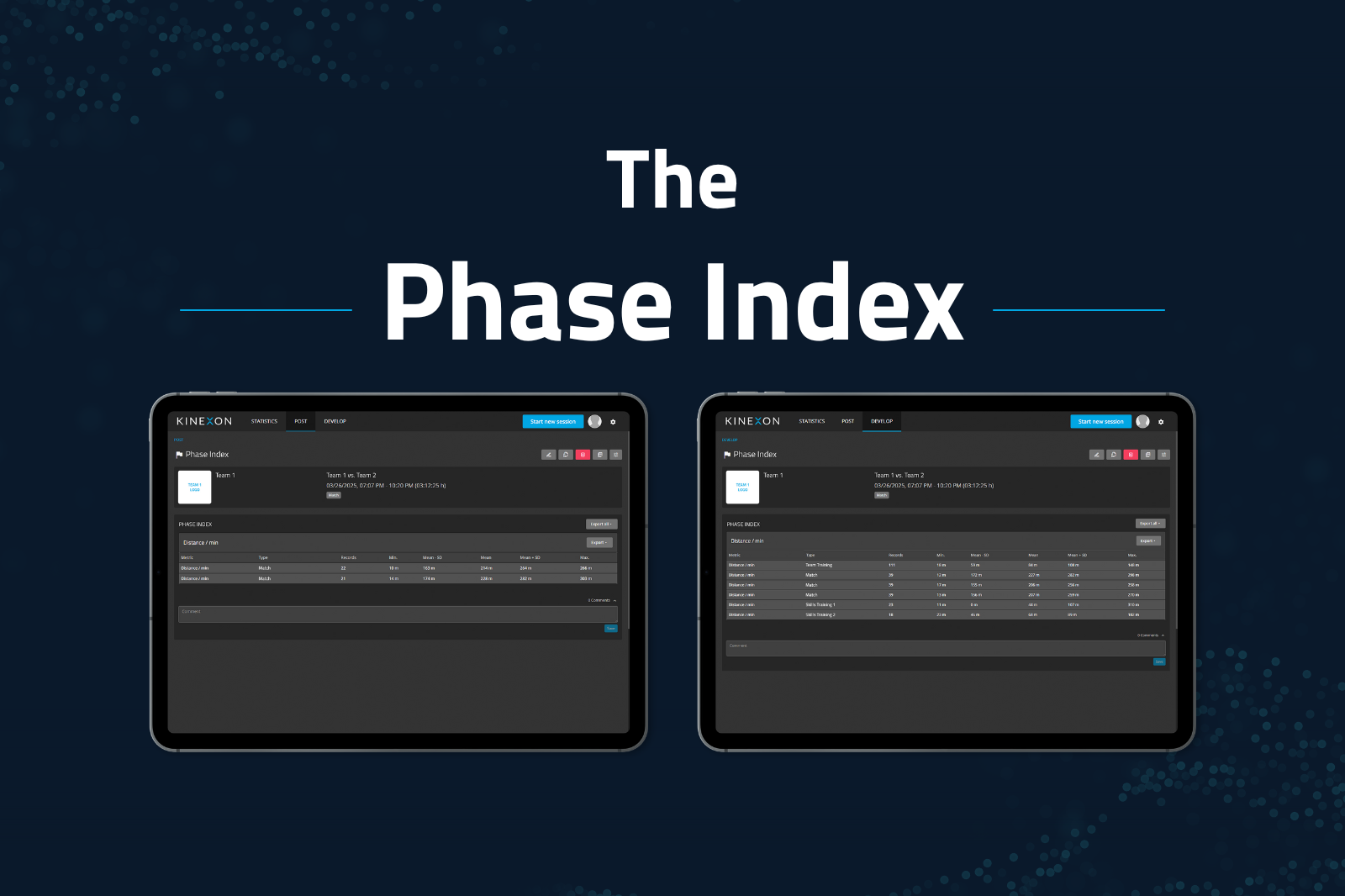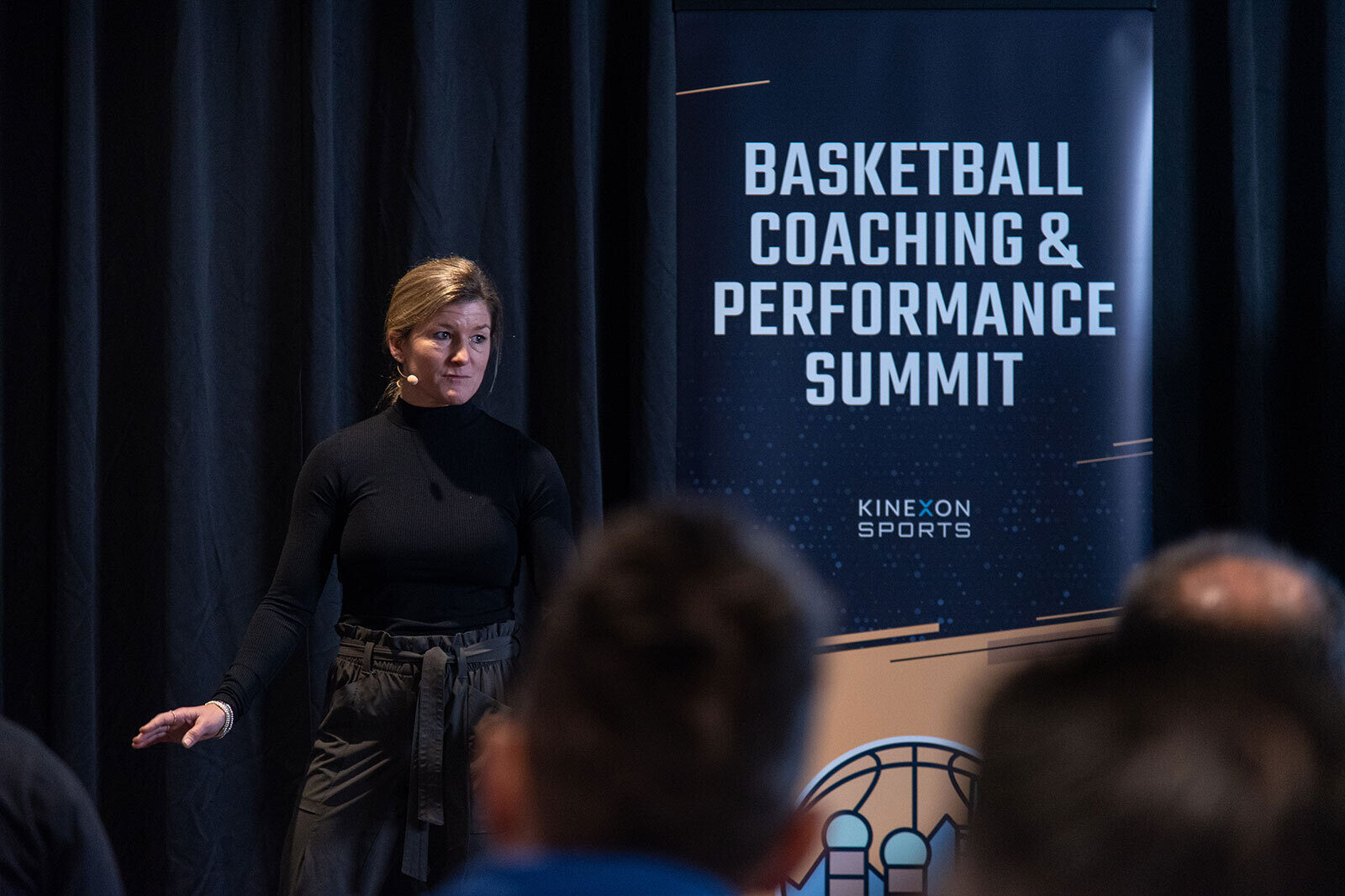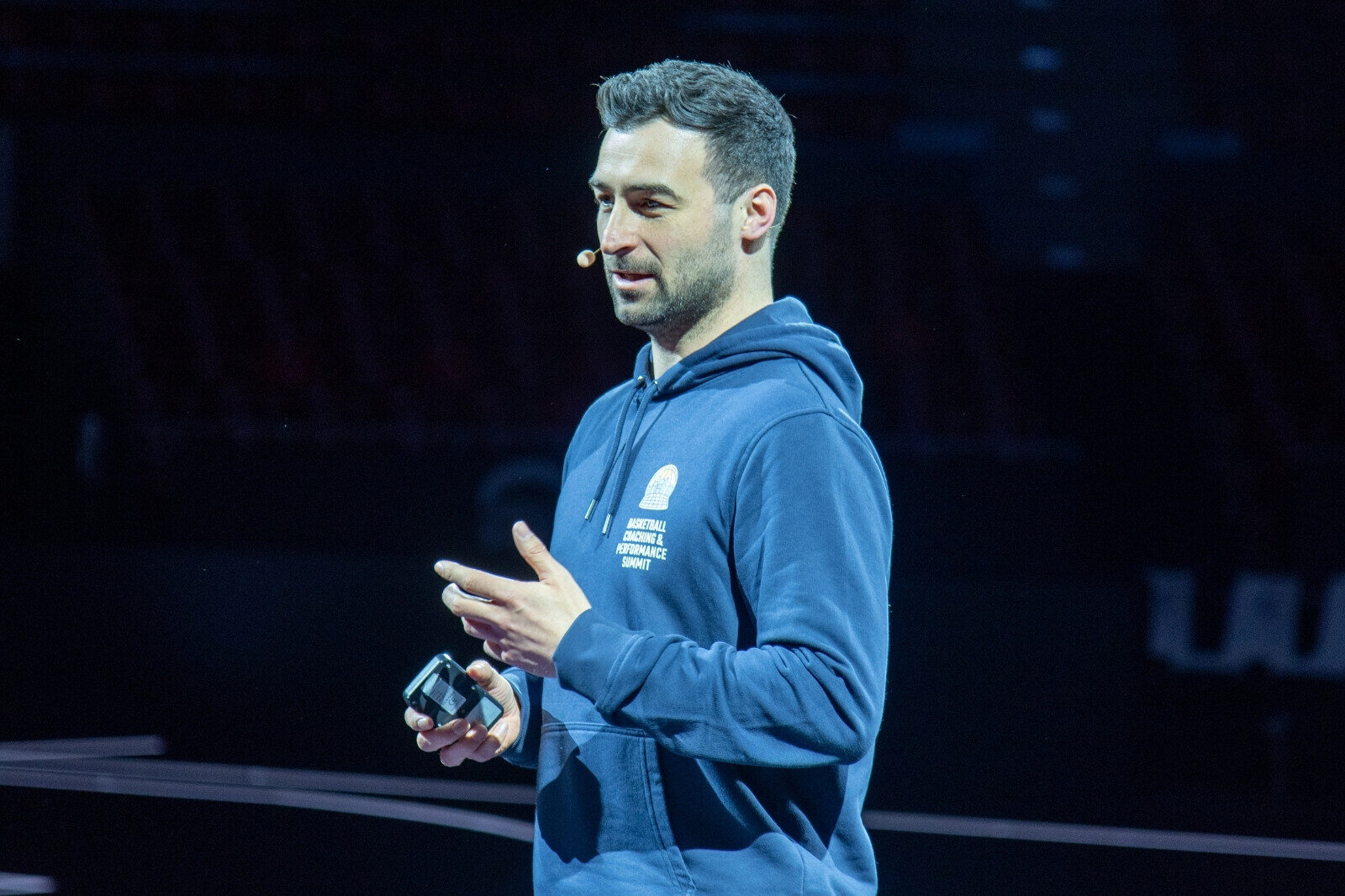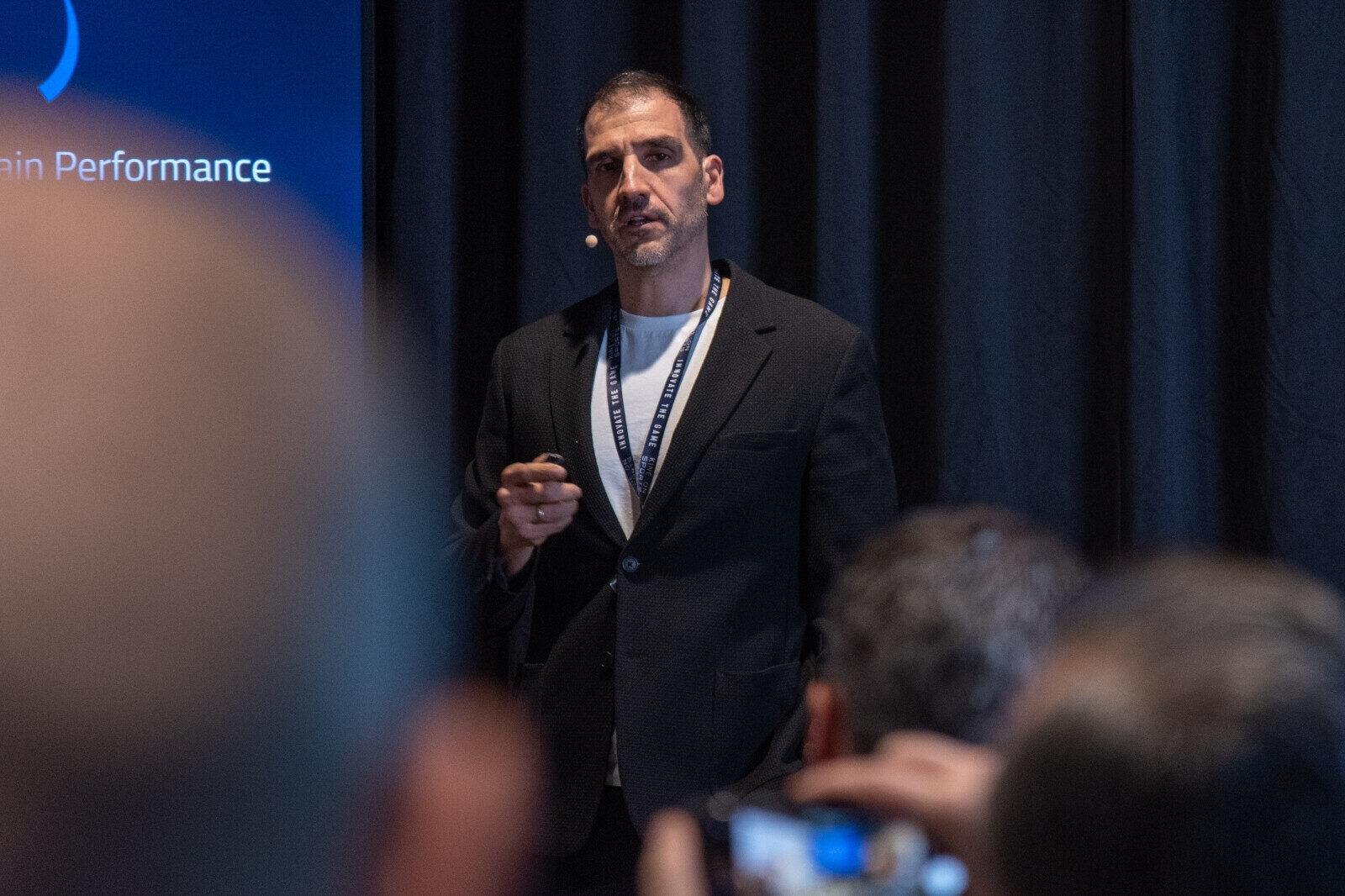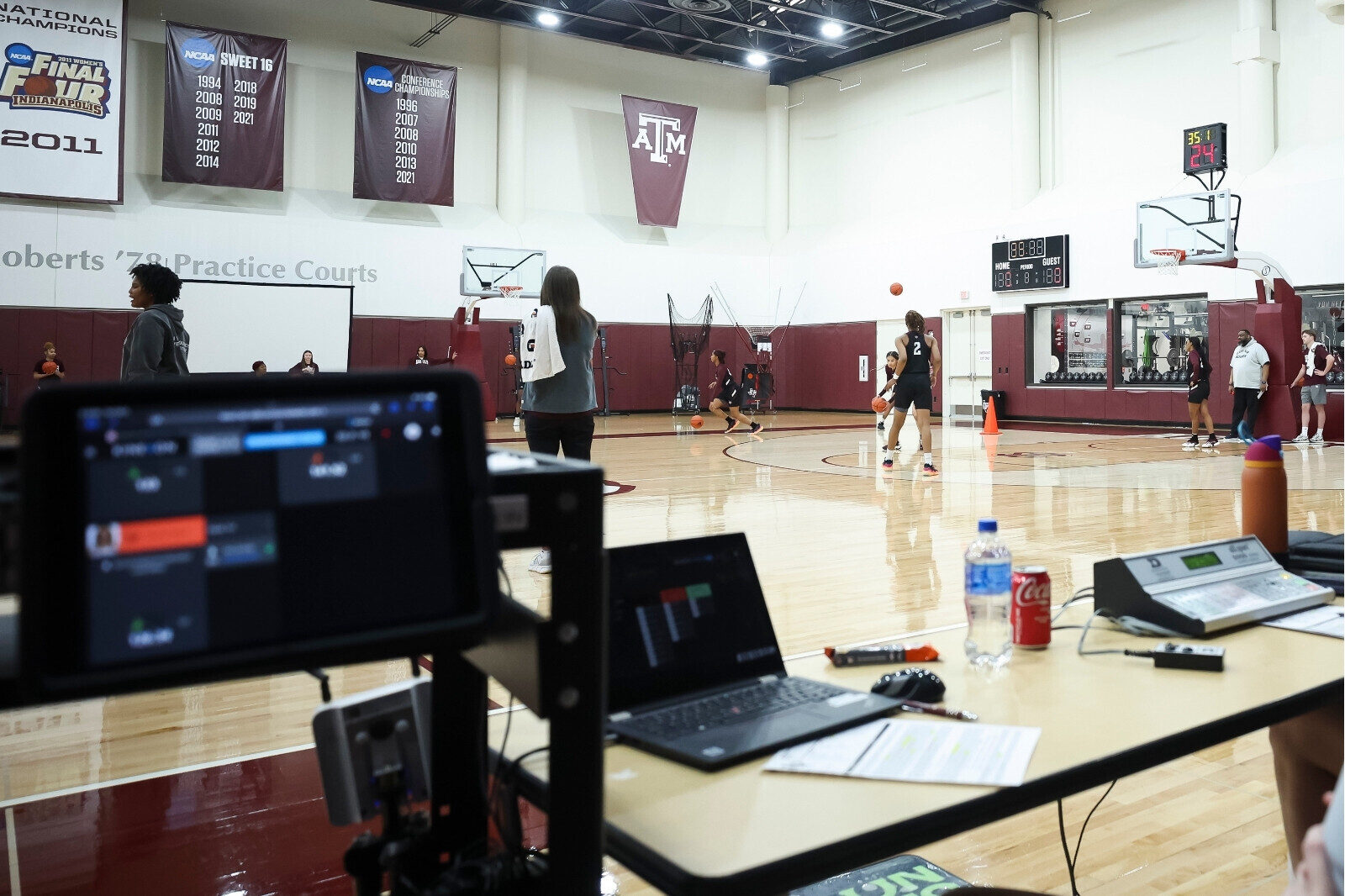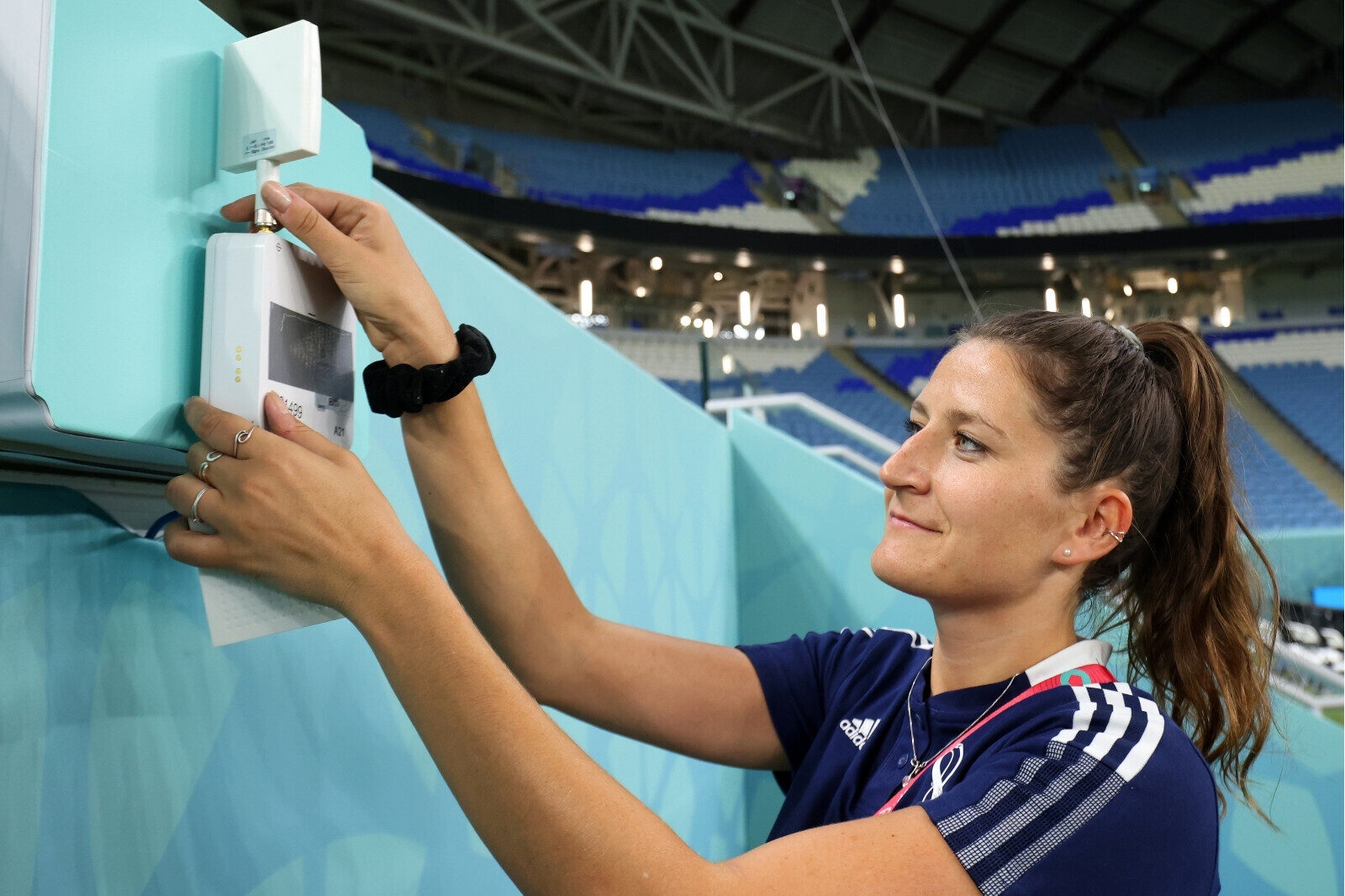From Court to Code: The Analytics Behind Athletic Success
In the high-stakes world of competitive basketball, small margins make the difference between winning and losing. This is where optimization becomes the cornerstone of athletic performance. The focus is not just on finding a magic formula, but on creating the conditions for athletes to consistently operate at their best.
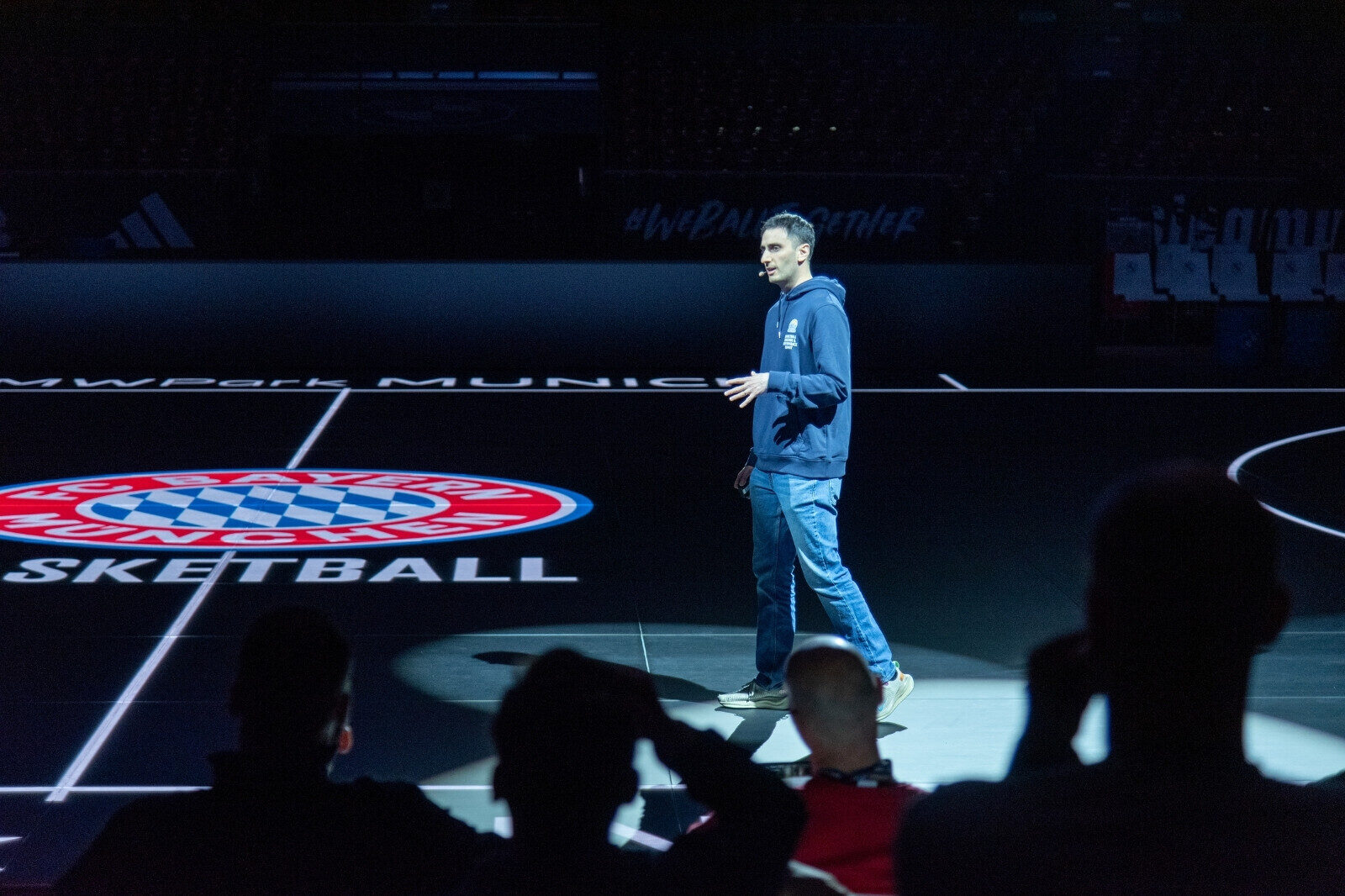
At the 1st Basketball & Performance Summit at BMW Park in Munich, Gregory Bernstein from KINEXON Sports offered deep insights into how modern performance tracking systems — specifically KINEXON’s IMU (Inertial Measurement Unit) system— can give your team the extra edge that often makes the difference between winning and losing.
What Is Holistic Performance Tracking?
Greg emphasized the importance of “complete performance tracking,” which means going beyond simple stats to understand an athlete’s workload, intensity, high exertion levels, and basketball-specific movements. Using accelerometer-based data, the IMU system enables coaches and performance staff to capture the nuances of physical performance without needing complex court-side infrastructure. It can operate in two modes: post-processing only (just the sensor), or live mode (with a single anchor for real-time streaming). This portability makes it ideal for use across different venues without compromising data depth.
Four Pillars of Tracking
Performance tracking is built on four pillars: workload (total movement volume), intensity (rate of play), high exertion (peak effort moments like sprints), and basketball-specific movements (e.g., jumping). Analyzed in tandem, these metrics combine to form a complete and well-rounded view of how athletes move and perform over time.
From Data Collection to Action
Collecting data is just the first step. The next is turning it into actionable insights. This includes:
- Tagging drills and practice segments to see which moments match game intensity.
- Segmenting players by role or game exposure to personalize workloads.
- Replicating game demands in practice using data from competitive play.
Case Study: Year-on-Year Optimization
Greg shared a compelling NCAA case study showing how a team evolved their use of KINEXON’s IMU system over three years:
- Year 1: Training loads weren’t high enough in pre-season and ramped up too steeply before the postseason.
- Year 2: Loads were better managed — pre-season was used for conditioning, and postseason workloads were better balanced.
- Year 3: Practice sessions were carefully calibrated to mimic game intensity without overloading players.
Managing Load vs. Preparing for Load
Greg advocated for the term load preparation over load management. It’s not just about avoiding injury, but about progressively exposing players to in-game demands — especially during pre-season and for athletes returning from injury. Basketball isn’t just about total effort — it’s about excelling in peak moments. KINEXON’s system allows staff to identify the most demanding minutes, select drills to meet key thresholds via a drill index, and set performance goals for individuals or the team, ensuring players are prepared for critical in-game efforts.
Accessible, Actionable Data
One of the standout aspects of KINEXON Sports is its layered approach to data access:
- Instant reporting for coaches and players.
- Long-term exports for strategic planning.
- API integrations for deeper research and automation.
Conclusion: A Portable Solution for Modern Basketball
True optimization happens when robust data meets repeatable systems and intelligent application. KINEXON’s IMU-based tracking offers all three, making it a powerful tool for basketball teams aiming to win through science-backed preparation.
Watch the full presentation and talk by Gregory here.

